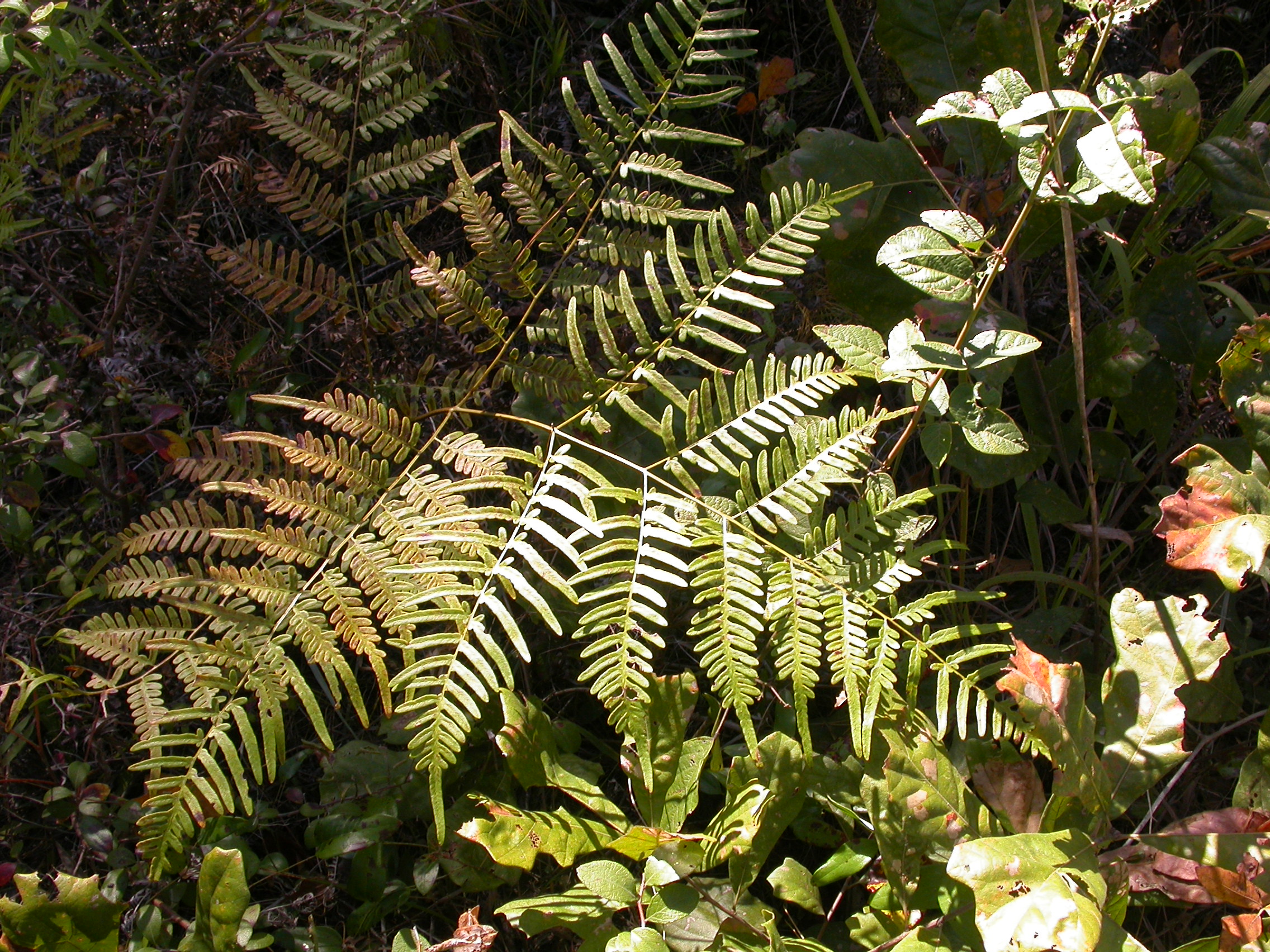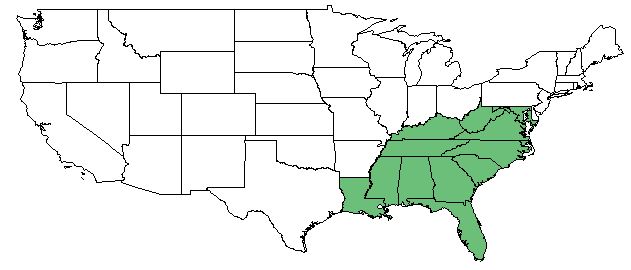Difference between revisions of "Pteridium latiusculum"
(→Description) |
|||
| Line 31: | Line 31: | ||
==Ecology== | ==Ecology== | ||
===Habitat=== <!--Natural communities, human disturbed habitats, topography, hydrology, soils, light, fire regime requirements for removal of competition, etc.--> | ===Habitat=== <!--Natural communities, human disturbed habitats, topography, hydrology, soils, light, fire regime requirements for removal of competition, etc.--> | ||
| + | The species is naturally found in dry woodlands, forests, and heath balds, up to 1600 meters in elevation. <ref name= "Weakley"> Weakley, A. S. (2015). Flora of the Southern and Mid-Atlantic States. Chapel Hill, NC, University of North Carolina Herbarium. </ref> | ||
<!--===Phenology===--> <!--Timing off flowering, fruiting, seed dispersal, and environmental triggers. Cite PanFlora website if appropriate: http://www.gilnelson.com/PanFlora/ --> | <!--===Phenology===--> <!--Timing off flowering, fruiting, seed dispersal, and environmental triggers. Cite PanFlora website if appropriate: http://www.gilnelson.com/PanFlora/ --> | ||
<!--===Seed dispersal===--> | <!--===Seed dispersal===--> | ||
Revision as of 19:50, 30 May 2018
| Pteridium latiusculum | |
|---|---|

| |
| Photo by Kevin Robertson | |
| Scientific classification | |
| Kingdom: | Plantae |
| Division: | Pteridophyta |
| Class: | Filicopsida |
| Order: | Polypodiales |
| Family: | Dennstaedtiaceae |
| Genus: | Pteridium latiusculum |
| Species: | P. latiusculum |
| Binomial name | |
| Pteridium latiusculum (Desvaux) Hieronymus | |

| |
| Natural range of Pteridium latiusculim from Weakley. [1] | |
Contents
Taxonomic Notes
Synonyms: Pteridium aquilinum (L.) Kuhn ssp. latiusculum, and Pteris latiuscula Desvaux var. latiuscula
Varieties: Pteridium latiusculum (Desvaux) Hieronymus ex Fries var. latiusculum, and Pteridium latiusculum (Desvaux) Hieronymus ex Fries var. pseudocaudatum (Clute) Maxon
Description
P. latiusculum is a native perennial forb that is a member of the Dennstaedtiaceae family. [2]
Distribution
The species is native to the southeast United States gulf coastal plain region, ranging from Louisiana and Kentucky to Maryland. [2]
Ecology
Habitat
The species is naturally found in dry woodlands, forests, and heath balds, up to 1600 meters in elevation. [3]
Conservation and Management
Cultivation and restoration
Photo Gallery
References and notes
- ↑ Weakley, Alan S. 2015. Flora of the Southern and Mid-Atlantic States: Working Draft of 21 May 2015. University of North Carolina, Chapel Hill, North Carolina. 1320 pp.
- ↑ 2.0 2.1 USDA Plants Database URL: https://plants.usda.gov/core/profile?symbol=PTAQL
- ↑ Weakley, A. S. (2015). Flora of the Southern and Mid-Atlantic States. Chapel Hill, NC, University of North Carolina Herbarium.